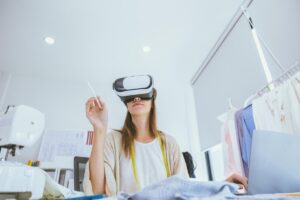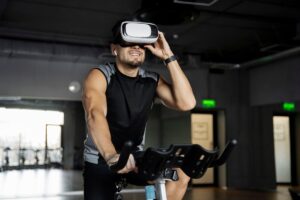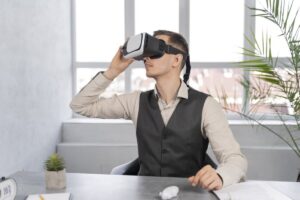The Esports Blog
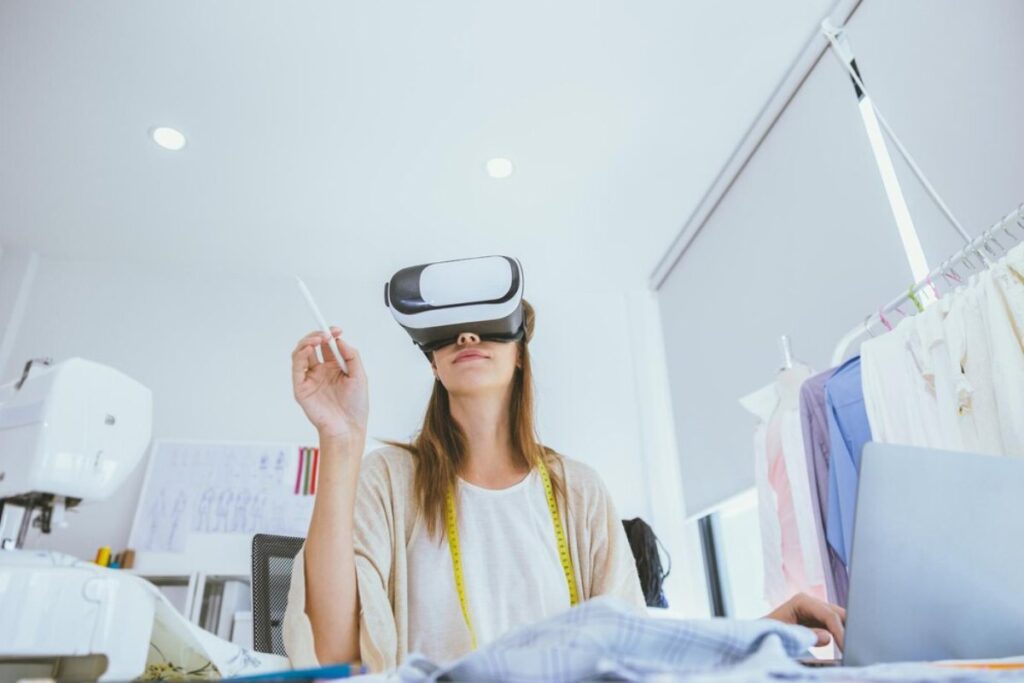
Fashion Design in VR: Digital Runways and 3D Clothing Creation
Fashion has always been about creativity and innovation. But today, it’s moving beyond fabrics and physical catwalks. Thanks to virtual reality, a new era of design is taking shape—one where clothing is created and presented entirely in digital environments. This shift, known as VR fashion design, is changing how designers work, how collections are showcased, and how people interact with style.
From digital runway shows that can be experienced in immersive 3D to advanced virtual clothing tools that let designers experiment without cutting a single piece of fabric, fashion is quickly becoming part of the virtual world. And it’s not just a novelty—it’s a sustainable, creative, and exciting new approach to design.
In this article, we’ll explore how VR is transforming the fashion industry, the tools designers are using, and what this could mean for the future of style.
What Is VR Fashion Design?
VR fashion design uses virtual reality to create clothing collections in fully digital spaces. Instead of sketching on paper or sewing samples, designers can build garments using software that simulates fabric, fit, and movement. These pieces can then be tested, shared, or showcased in virtual environments.
Designers can:
- Build and adjust garments using digital patterns
- See how fabrics move in real time
- Present full collections using avatars and virtual models
- Share their work instantly with teams or clients anywhere in the world
This new workflow helps designers move faster, reduce waste, and reach wider audiences without needing a physical product right away.

The Rise of Digital Runway Shows
When the pandemic disrupted traditional fashion shows, many brands turned to digital platforms. But some went even further—into fully immersive digital runway shows in VR.
Instead of watching a live stream or scrolling through photos, audiences can now enter a virtual space, walk around a fashion show, and view clothing from any angle. These shows can feature:
- Custom-built environments, like floating stages or fantasy landscapes
- Interactive features, such as zooming in on fabrics or seeing alternate looks
- Instant shopping or downloading of digital garments for avatars
Virtual shows aren’t limited by time, location, or cost. They can be as creative as the designer wants and open to global audiences with just a headset or a screen.
The Tools Powering Virtual Clothing Creation
To bring virtual fashion to life, designers rely on advanced virtual clothing tools that combine 3D modelling, pattern design, and animation. These platforms help create realistic clothing that looks and moves like the real thing.
CLO 3D
One of the most popular tools in the industry, CLO 3D allows designers to build garments, simulate fabric movement, and preview designs on different body types. It’s used by both independent creators and major brands.
Marvelous Designer
Ideal for costume and video game design, this platform focuses on detailed cloth simulation. It’s especially useful for digital creators working outside traditional fashion.
Blender
An open-source 3D tool that supports clothing creation, animation, and rendering. It’s flexible and powerful, though it has a steeper learning curve.
Avatar Platforms (e.g. Ready Player Me, Roblox Studio)
These platforms let designers create and sell fashion for digital avatars. Millions of users already use virtual outfits in online games and social platforms.
These tools help designers experiment, present, and even sell digital clothing without ever needing to cut a real fabric swatch.
How Designers Use VR in Their Process
Incorporating VR into the design process isn’t about replacing creativity—it’s about enhancing it. Designers can:
- Visualise their ideas in 3D from the very beginning
- Test how a piece looks when it moves before making a prototype
- Try different fabrics, fits, and styles quickly
- Share their designs instantly with clients, buyers, or collaborators
- Prepare files for use in games, AR filters, or online showrooms
This approach saves time, reduces production costs, and opens up new opportunities—especially for small studios or freelance designers.
A More Sustainable Way to Design
VR fashion design doesn’t just change how clothes are made—it also helps reduce waste. Traditionally, creating a new collection involves fabric samples, travel for shows, and unsold stock. Digital fashion cuts down on all of this.
Designers can:
- Skip physical samples by using accurate digital simulations
- Test interest in a look by showing it online before production
- Reach audiences directly without printing lookbooks or booking venues
- Sell digital-only pieces for use in social media, games, or virtual worlds
As fashion becomes more conscious of its environmental impact, virtual tools offer a smarter, greener way to create.
Who Wears Digital Fashion?
Digital fashion isn’t just for designers—it’s becoming a way for consumers to express themselves online. People now buy virtual clothing for:
- Social media filters or photoshoots
- Dressing up avatars in platforms like VRChat, Zepeto, or Decentraland
- Online events or metaverse experiences
- Collecting limited-edition digital pieces or NFTs
For a growing number of people, digital style is just as important as what they wear in the real world. And for designers, that means an entirely new market to explore.
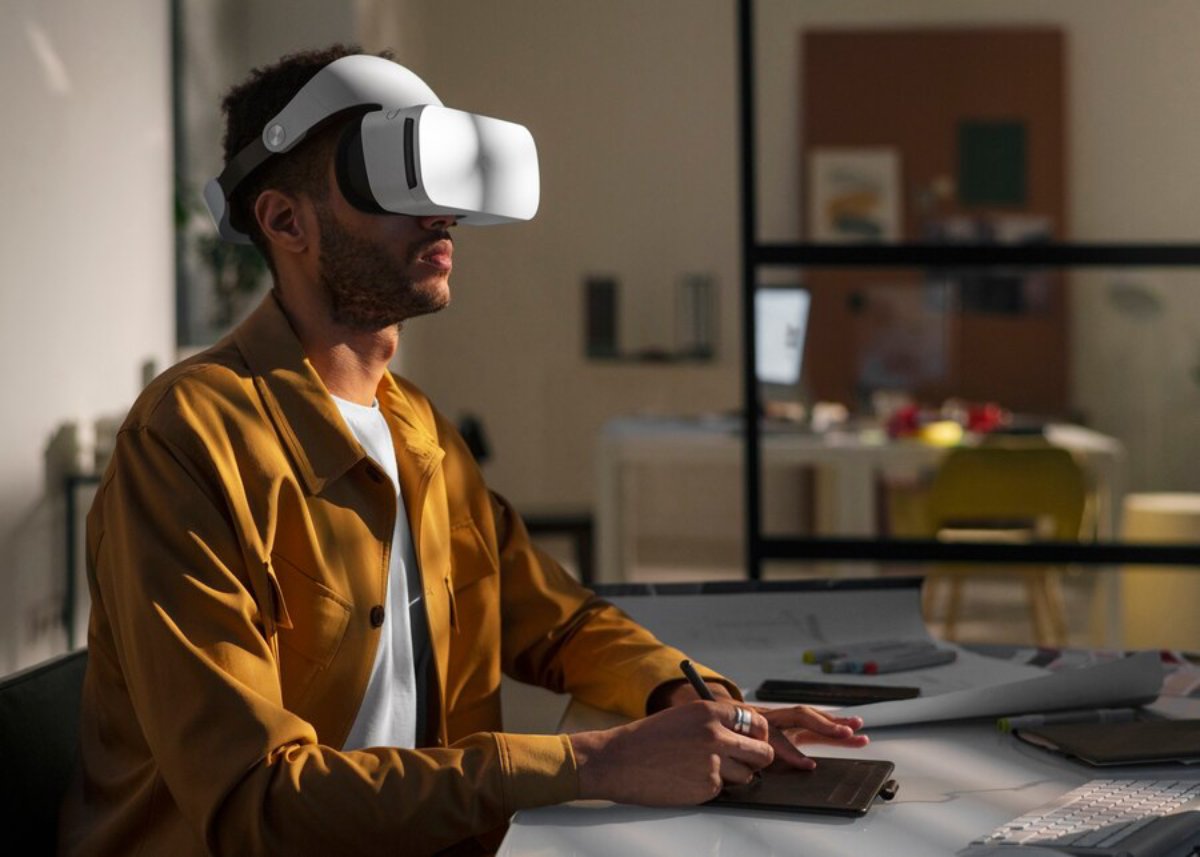
Learning to Design in Virtual Spaces
As this field grows, more courses and programmes are helping designers learn how to create in VR.
You can now find:
- University programmes focused on digital fashion
- Online courses teaching CLO 3D, Blender, or avatar design
- Community challenges hosted by platforms like The Fabricant Studio
- Tutorials on platforms like Skillshare, Domestika, and YouTube
Learning these tools opens the door to new careers in gaming, digital marketing, and virtual retail—alongside traditional fashion design.
Challenges and Considerations
Even with its advantages, designing fashion in VR has some challenges:
- Some platforms require strong technical skills
- Not all software tools are beginner-friendly
- There’s no single standard for digital garments, making sharing and selling harder
- Access to powerful computers or headsets isn’t always easy
- Ownership rights and pricing for digital clothes are still evolving
Still, as the tools improve and more people get involved, these challenges are becoming easier to manage.
What’s Next for Fashion in VR?
The future of VR fashion design is full of potential. Some trends to watch include:
- Hybrid shows that blend virtual and physical fashion events
- AI-powered assistants to help with styling or pattern suggestions
- Digital-only brands that create fashion purely for online audiences
- Virtual stores and changing rooms where customers can browse and try on clothing in 3D
- Custom digital tailoring that allows people to personalise clothing before buying
Fashion has always evolved with culture—and as we spend more time online, the way we design, share, and wear clothing is evolving too.
Final Thoughts: Creativity Without Limits
Virtual reality is opening up new possibilities for fashion. From digital runway shows to advanced virtual clothing tools, designers now have the freedom to explore ideas that might not be possible in the physical world. This shift isn’t about replacing traditional fashion—it’s about expanding it.
VR fashion design gives creatives the power to dream bigger, work smarter, and connect with audiences in exciting new ways. And as the digital world continues to grow, so too will the role of fashion within it.



